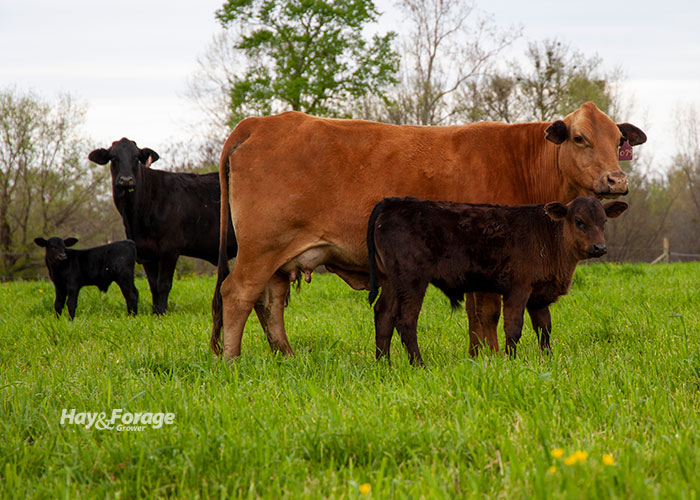Too many beef herds are out of forage sync |
| By Mike Rankin, Managing Editor |
|
|
|
It’s difficult to separate the animal and forage components of a pasture-based cow-calf system. Forage production and quality have peaks and valleys throughout the year, and the same can be true for the nutritional requirements of the cow. The difficulty lies in getting these two things in sync. “This might be an unpopular opinion, but quite frankly, some of our nutritional challenges we create on our own by making the conscious choice to calve during the winter,” said Eric Bailey during a University of Missouri Forage Town Hall webinar. The extension beef nutritionist explained, “A cow’s peak nutrient demand occurs about 60 days post-calving, and she needs to become pregnant again by about 85 days after calving. We really have a lot of nutrient demands occurring in a relatively short window. When we time this demand into a window when our forage production and energy is at its lowest, we’re forced to backfill with calories from off the farm.” Another component of the winter system that contributes to many feeding deficiencies is that too many producers are focused on tonnage when making hay for winter feeding and little regard is paid to forage quality. This “unforced error” exacerbates the energy deficit during winter feeding. To monitor animal performance and energy intake during winter, Bailey encourages producers to body condition score (BCS) cows, with 1 being a cow that’s emaciated and 9 being a cow that’s “town dog fat.” “Thin cows take longer to breed back after calving,” Bailey noted. “A cow with a body condition score of 3 will take nearly 90 days to resume estrus, whereas a cow with a score of 5 will be ready to breed about 30 days earlier. There’s no way you will keep a 365-day calving interval with thin cows because they must be bred in 85 days postcalving to maintain that interval.” Bailey said he doesn’t get alarmed if only a few cows in a herd are thin, and it’s no reason to go out and purchase a lot of supplemental feed to bring them up. These simply might be cows to cull. The bigger problem is if an entire herd is too thin. “A cow will prioritize milk production over reproduction in a nutrient-deficit environment,” Bailey said. “Putting cows in a situation where they will lose weight or spending money on feed so they don’t lose weight is not an appealing prospect.” How much and how good? Bailey uses a couple rules of thumb to match forage quality to animal nutrient requirements. He wants to have forage quality at 55% total digestible nutrients (TDN) or more for pregnant cows and at least 60% TDN for lactating cows. “If forage quality is less than these benchmarks, rumen fill will limit the cow from meeting her nutritional requirements,” he said. For crude protein (CP), Bailey recommends 8% or higher for pregnant cows and at least 10% for lactating cows. “In our environment, we’re rarely lacking in protein,” he noted. “I see a lot of fescue hay that tests 46% to 47% TDN but will still have 8% or higher crude protein. It’s more important to focus on energy.” Bailey offered an example of a pregnant cow eating a 50% TDN and 8% CP hay. He said if the cow eats 30 pounds of hay per day, she will still need supplemental feed to meet her requirements. At today’s prices, that can add 60 to 75 cents per cow per day to the feed bill. “To buck the expensive feed prices that will likely continue into the foreseeable future, the best thing you can do for your forage program in 2022 is to put up high-quality forage and avoid purchasing supplements,” Bailey emphasized. “Hire someone to wrap baleage if it means getting your hay made in a timelier fashion. “We need expensive supplements because we’ve designed our beef production systems out of sync with our forage production systems. As a result, making high-quality hay is necessary to maximize margins,” he added. “The best cow-calf operations are the ones that allow grazed forage to absorb as much of the nutritional needs as possible,” Bailey emphasized. “There is still time this year to make some very impactful decisions that will reduce the amount of hay that needs to be fed next year or that will result in higher quality hay being harvested and fed when it needs to be. Think hard about how to better match your forage production with your cows’ nutrient requirements,” he concluded. The University of Missouri forage/livestock town hall meetings are available on YouTube. |

